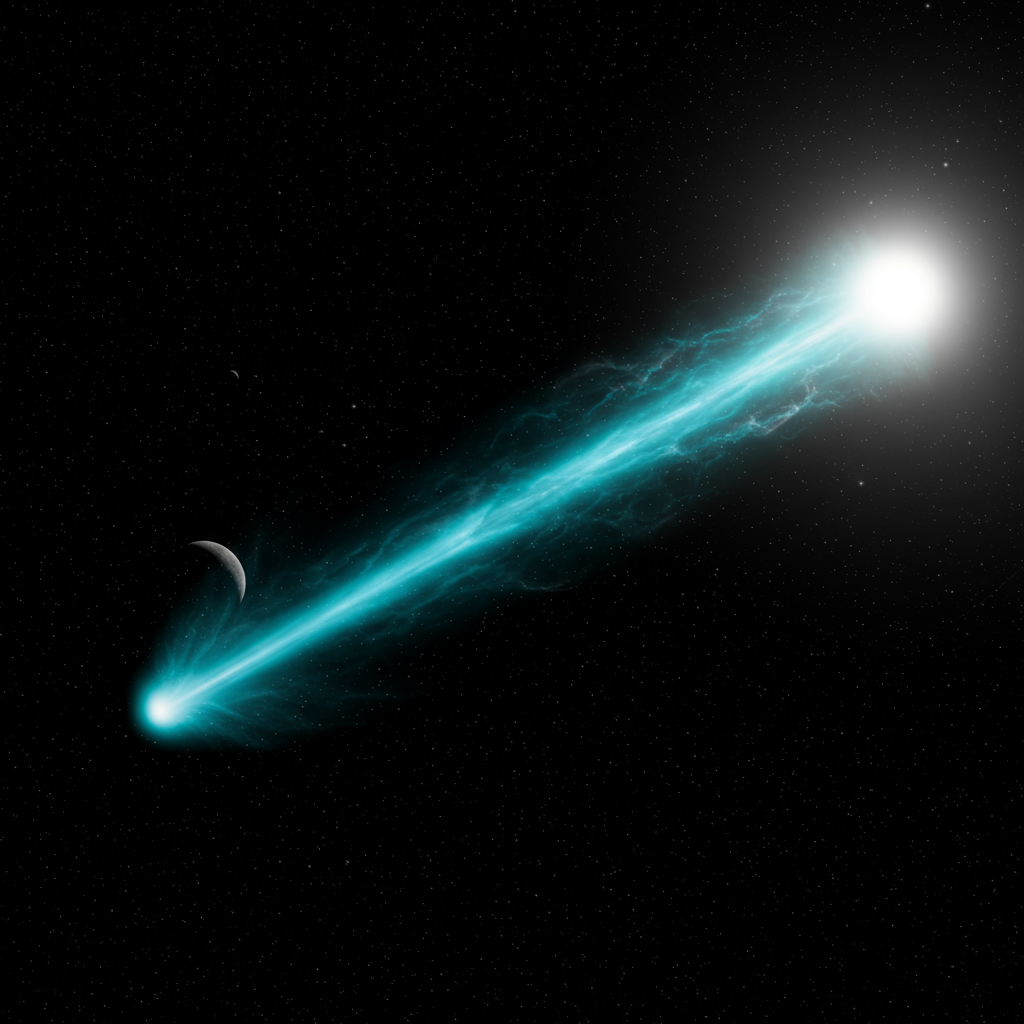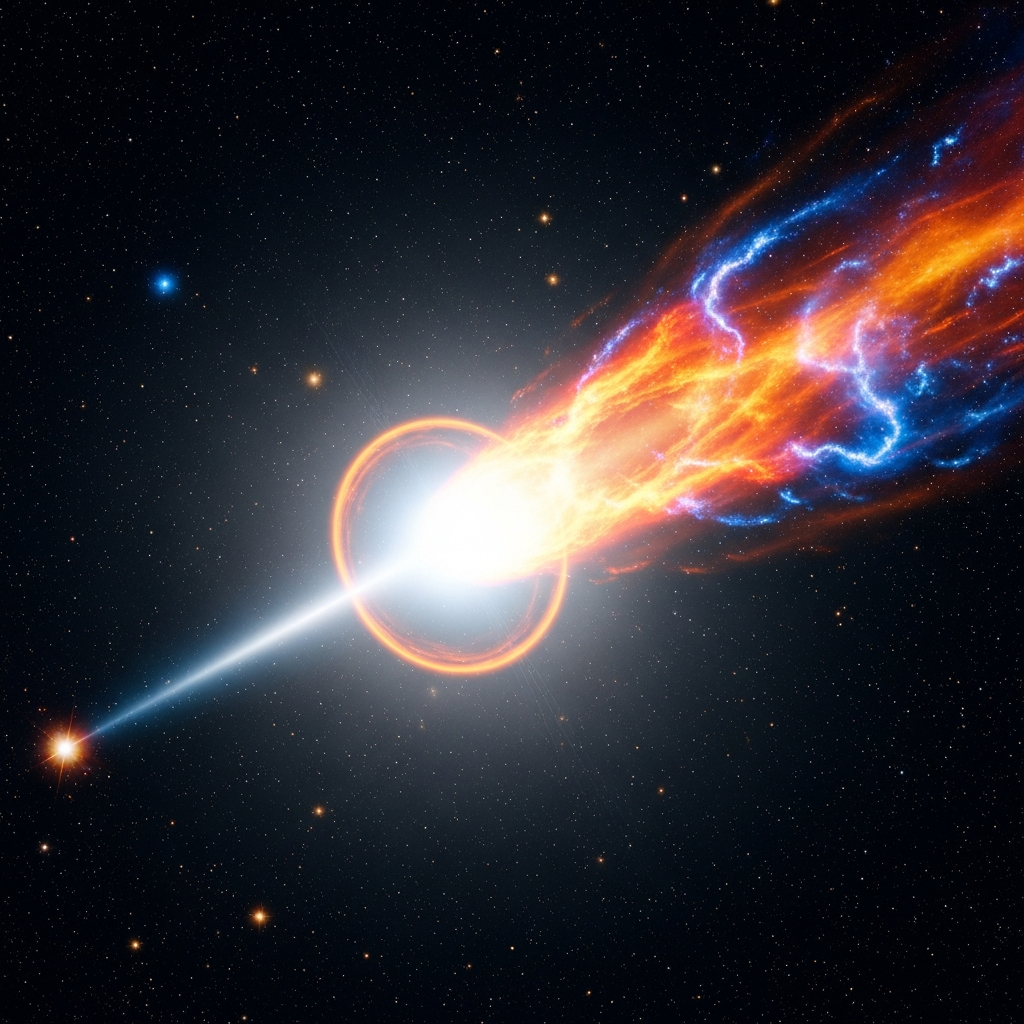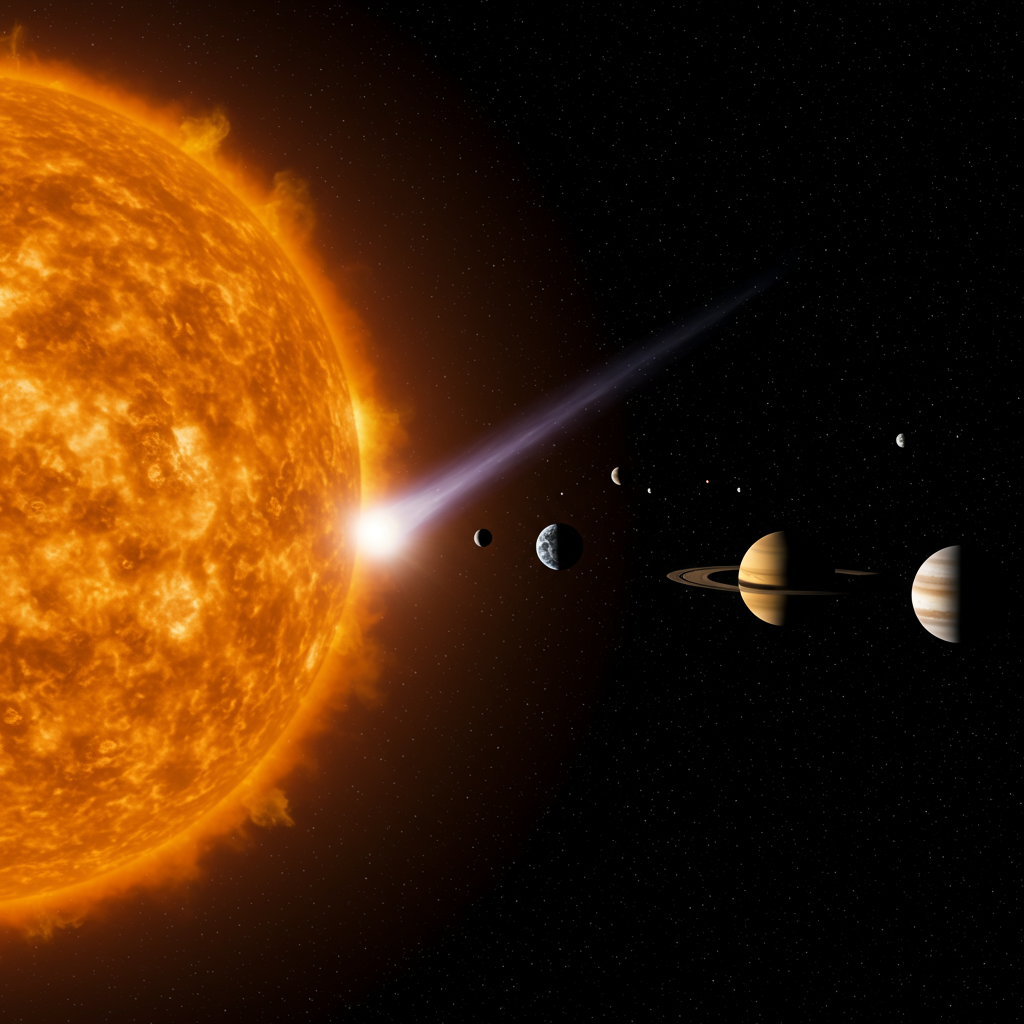A new cosmic visitor, confirmed by NASA and international astronomers, is currently making its way through our solar system. This is no ordinary space rock; designated 3I/atlas, it’s only the third interstellar object ever definitively detected. Scientists are buzzing with excitement, seeing this rare passage as a unique opportunity to study material from beyond our stellar neighborhood and gain insights into how planets and solar systems form elsewhere in the galaxy.
The detection was a collaborative effort spearheaded by automated sky surveys designed to spot potential threats. On July 1, 2025, the NASA-funded ATLAS (Asteroid Terrestrial-impact Last Alert System) telescope in Chile first flagged the object. Following this initial alert, astronomers worldwide scrambled to gather more data. They dug through archival records from other ATLAS sites in Hawaii and South Africa, as well as the Zwicky Transient Facility in California, finding “pre-discovery” observations dating back to mid-June. These earlier sightings were crucial for precisely calculating the object’s trajectory.
An Extraordinary Interstellar Traveler
What makes 3I/ATLAS so special? Its path and incredible speed. Unlike objects born within our solar system, which follow elliptical or parabolic orbits bound by the Sun’s gravity, this visitor is on a hyperbolic trajectory. Its velocity is so high – estimated over 60 kilometers per second (more than 134,000 mph or 216,000 km/h) – that it clearly originated far beyond the Sun’s gravitational grasp. Its orbital eccentricity is calculated to be well over 1, with estimates ranging from six to over ten, confirming its interstellar origin beyond doubt.
Astronomers, including those at the International Astronomical Union’s Minor Planet Center (MPC), have officially classified it as a comet, initially giving it the provisional name A11pl3Z before the formal designation 3I/ATLAS (or C/2025 N1). This classification is supported by observations showing tentative signs of activity, such as a dusty atmosphere or “coma” and a faint, short tail. Its apparent “fuzziness,” unlike the sharp points of stars, is another indicator of its icy, volatile composition becoming active as it approaches the Sun.
Size and Origin Direction
Estimates for the size of 3I/ATLAS vary, but suggest it’s quite substantial. Initial analyses point to a diameter perhaps between 10 and 20 kilometers (6 to 12 miles). If the larger end of this range holds true, it could potentially be the biggest interstellar object detected so far, surpassing both ‘Oumuamua (2017) and 2I/Borisov (2019).
Where did it come from? Based on its incoming trajectory, the comet appears to hail from the direction of the constellation Sagittarius, specifically from the thin disk of our Milky Way galaxy. Scientists theorize that such objects form in other star systems and are then ejected into the vast interstellar void by gravitational slingshots, perhaps during close encounters with passing stars.
Tracking the Journey: Trajectory and Closest Approach
Currently located hundreds of millions of miles away, 3I/ATLAS is rapidly moving toward the inner solar system. As of early July 2025, it was roughly 420 million miles (670 million kilometers) from Earth and about 4.5 astronomical units (AU) from the Sun. One AU is the average distance between the Earth and the Sun, about 93 million miles. So, it’s presently well beyond Mars’ orbit, closer to Jupiter’s path.
Its closest approach to the Sun, known as perihelion, is anticipated around October 30, 2025. At that point, it will be approximately 1.4 AU (about 130 million miles or 210 million km) from our star, just inside the orbit of Mars. Importantly, this journey poses absolutely no threat to Earth. Its trajectory keeps it at a significant distance. The closest it will come to our planet is expected in December 2025 as it heads back out of the solar system, but it will remain at a safe minimum distance of at least 1.6 AU (about 150 million miles or 240 million km). There is no risk of collision.
Observing the Rare Visitor
Astronomers around the globe are now intently observing 3I/ATLAS. While currently quite dim, making it challenging for all but the largest professional telescopes or very experienced amateur astrophotographers, it is expected to gradually brighten as it nears the Sun.
Ground-based telescopes should be able to track it through September 2025. After that, its proximity to the Sun will make it difficult or impossible to observe temporarily. However, astronomers anticipate it will reappear from behind the Sun by early December, allowing for renewed study as it heads away from the inner solar system.
New, powerful observatories like the recently operational Vera C. Rubin Observatory in Chile are particularly adept at tracking moving objects and are expected to play a significant role in future observations of 3I/ATLAS and potentially many other interstellar visitors. There’s even speculation about utilizing NASA’s Mars rovers to capture images during the comet’s October flyby of the Red Planet, and the James Webb Space Telescope could potentially be used to analyze its composition in detail.
The Significance of Interstellar Guests
The confirmed detection of a third interstellar object in just eight years highlights a significant advancement in our ability to survey the cosmos. It also supports the long-held scientific belief that interstellar objects are likely common, with modeling suggesting thousands of varying sizes could pass through our solar system at any given time. As telescope technology improves, particularly with facilities like the Vera C. Rubin Observatory coming online, astronomers predict discovering such objects could become a monthly occurrence.
These fleeting visitors offer an unprecedented opportunity to study material from other star systems directly. Analyzing their composition – what kind of ice, rock, and potentially complex organic molecules they carry – can provide unique clues about planet formation processes beyond our own solar system. Finding precursors of life, like amino acids, on such an object, for instance, would offer compelling evidence that the building blocks for life exist elsewhere in the universe. While sending a space mission to intercept 3I/ATLAS isn’t feasible given its speed and trajectory, studying it remotely provides a valuable glimpse into cosmic materials that have traveled vast distances.
This discovery underscores the dynamic nature of our galaxy, where “bits and pieces” of distant star systems regularly travel across interstellar space, occasionally passing close enough for us to reach out and study them with our telescopes.
Frequently Asked Questions
Why is the discovery of 3I/ATLAS so important?
The discovery of 3I/ATLAS is highly significant because it is only the third confirmed interstellar object humanity has ever detected passing through our solar system. The previous two were ‘Oumuamua in 2017 and 2I/Borisov in 2019. These rare visitors provide scientists with a unique chance to study material originating from other star systems, offering invaluable insights into their composition and how planetary systems might form beyond our own.
How can I potentially see the interstellar comet 3I/ATLAS?
Currently, 3I/ATLAS is quite faint and primarily observable with large professional telescopes or advanced amateur astrophotography equipment. It is expected to brighten as it approaches the Sun and should remain visible to ground-based telescopes through September 2025. It will be temporarily obscured by the Sun in October and November but is anticipated to become visible again by early December 2025 as it moves away. Check with local astronomical societies for potential viewing events or updates.
Is the interstellar comet 3I/ATLAS dangerous to Earth?
No, NASA and other astronomical bodies confirm that the interstellar comet 3I/ATLAS poses absolutely no threat to Earth. Its trajectory keeps it at a safe distance. It will make its closest approach to the Sun inside the orbit of Mars and its closest approach to Earth in December 2025, but it will remain at least 1.6 astronomical units (about 150 million miles or 240 million km) away from our planet, well beyond the distance for any potential impact.
Word Count Check: 1100




